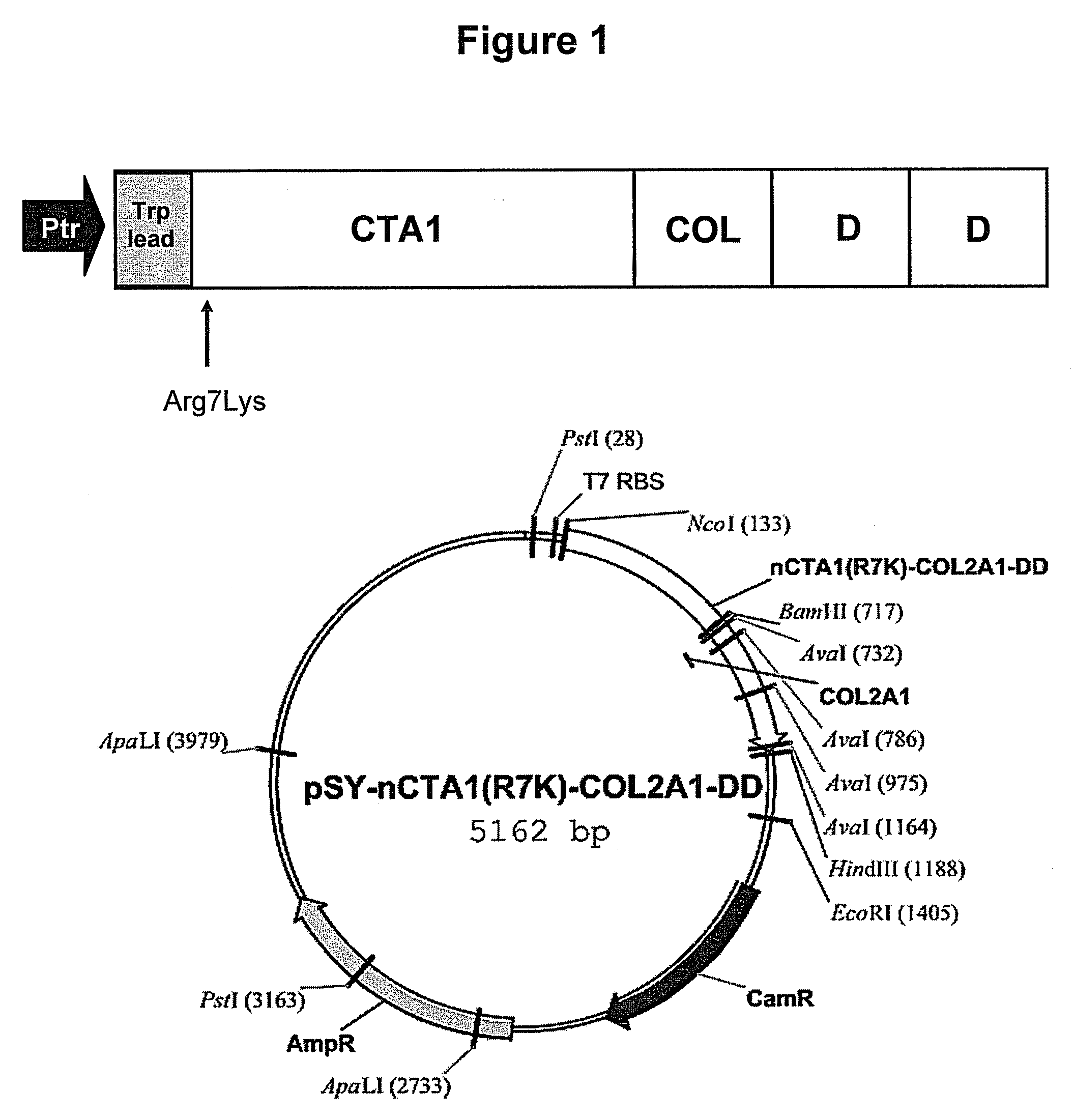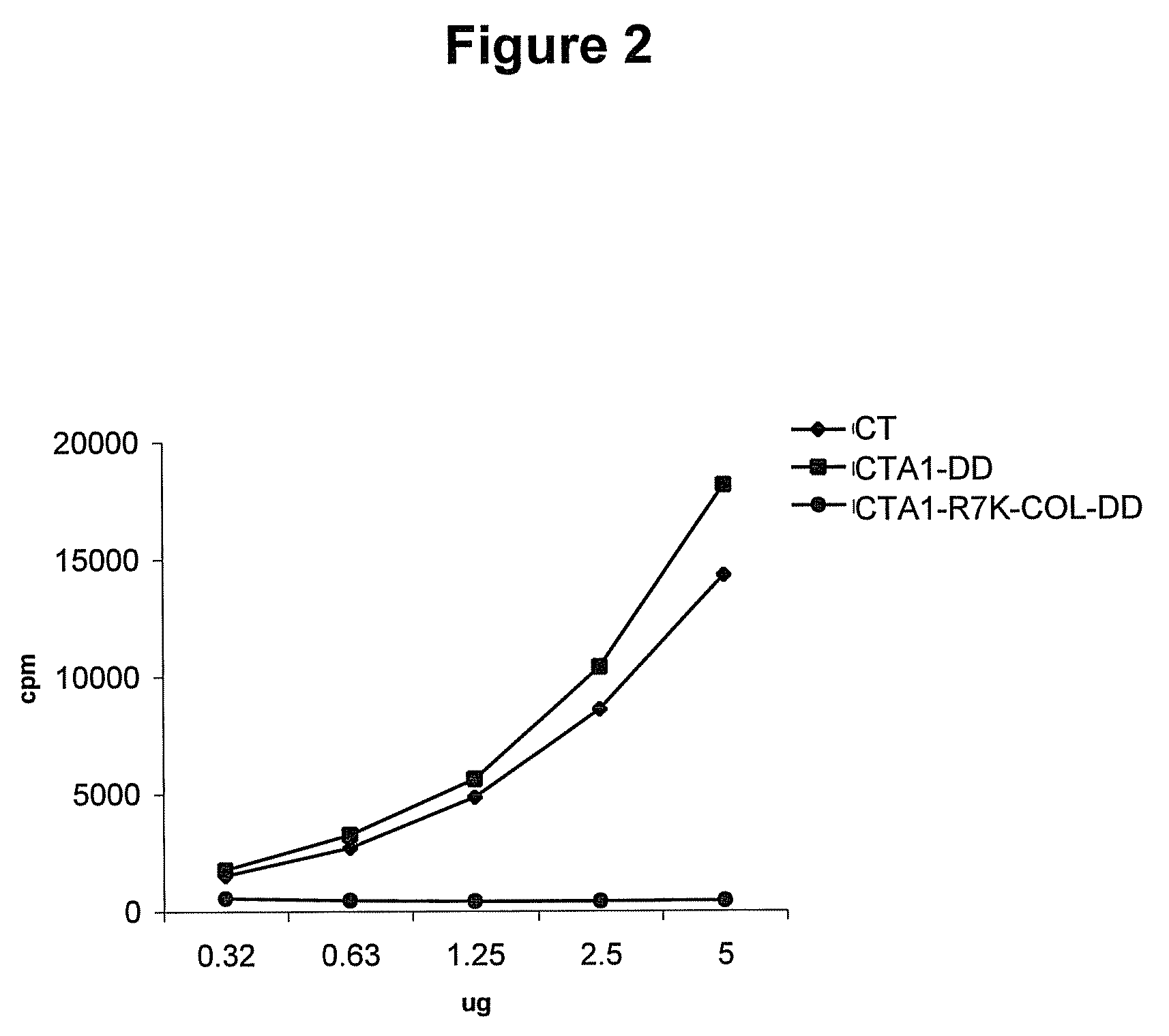Compositions and methods for treatment of autoimmune and allergic diseases
a technology for autoimmune and allergic diseases, applied in the field of immunology and medicine, can solve the problems of empirical and unsatisfactory management of human systemic autoimmune diseases, drug interactions with significant renal toxicity, and immunosuppressive agents with minimal efficacy in treating ms
- Summary
- Abstract
- Description
- Claims
- Application Information
AI Technical Summary
Benefits of technology
Problems solved by technology
Method used
Image
Examples
example 1
Immunomodulating Complex CTA1-R7K-COL-DD
[0143]Construction of CTA1-DD mutants, expression and purification of fusion proteins were performed essentially as described by Agren (J Immunol 1999, 162: 2432-2440).
[0144]The pCTA1-DD plasmid contains the cholera toxin A1 gene (aa 1-194) cloned at HindIII-BamHI and DNA coding two D fragments from the staphylococcal protein A gene under the control of the trp promoter. DNA encoding a collagen peptide, the shared immunodominant collagen II peptide (CII260-273), was inserted between DNA encoding the CTA1 and the DD moieties giving the pCTA1-R7K-COL-DD plasmid. (FIG. 1).
example 2
ADP Ribosylating Activity
[0145]It was investigated whether the changes in molecular design had functional consequences for the enzymatic activity of CTA1. The ADP ribosyltransferase activity was analyzed using the cell-free NAD:agmatine-assay. A linear dose response activity of CTA1-COL-DD was found. By contrast, no ADP-riboylating activity was found with CTA1-R7K-COL-DD (FIG. 2). These results clearly demonstrated that CTA1-R7K-DD had lost its enzymatic activity.
example 3
Binding to IgG
[0146]IgG binding was measured by ELISA. The CTA1-R7K-COL-DD mutant has retained its ability to bind to human IgG in solid phase, indicating that the DD-element was unaffected by the mutation in CTA1 (FIG. 3).
PUM
| Property | Measurement | Unit |
|---|---|---|
| affinity | aaaaa | aaaaa |
| water solubility | aaaaa | aaaaa |
| acid | aaaaa | aaaaa |
Abstract
Description
Claims
Application Information
 Login to View More
Login to View More - R&D
- Intellectual Property
- Life Sciences
- Materials
- Tech Scout
- Unparalleled Data Quality
- Higher Quality Content
- 60% Fewer Hallucinations
Browse by: Latest US Patents, China's latest patents, Technical Efficacy Thesaurus, Application Domain, Technology Topic, Popular Technical Reports.
© 2025 PatSnap. All rights reserved.Legal|Privacy policy|Modern Slavery Act Transparency Statement|Sitemap|About US| Contact US: help@patsnap.com



